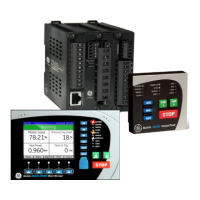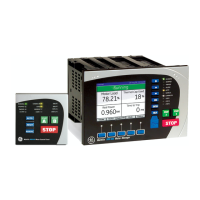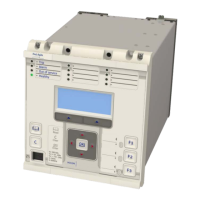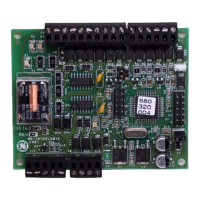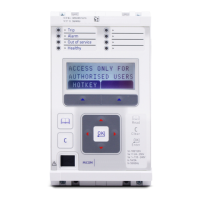V02745
PSB Reset Delay
&
Any Dist Start
P Swing Detector
Ph1
t
0
3 cycles
Ph2
Block selected element
Fault detection
during power swing
Power Swing
PSB Unblock Dly
PSB Fault
t
0
&
Blocking
t
0
PSB Unblocking
Enabled
&
Slow Swing
PSB Z7
PSB Z8
PSB Z 7'
PSB Z 8'
PSB R7
PSB R8
PSB R7'
PSB R8'
Alpha
PSB Timer
Quad
characteristic
definition
I
V
PSB Timer
Enable
Detector
Module
Impedance
Calculator
Slow Swing PSB Detector
Slow PSB
1
Power Swing
1691
1014
1015
297
607
Figure 154: Power swing blocking logic
Note:
This is a simplified representation to highlight the outputs of the Power Swing Blocking function.
3.6
POWER SWING BLOCKING SETTING GUIDELINES
Power sing blocking (PSB) should normally only be enabled in transmission system applications. Power swings are
not expected to occur at distribution level.
The main power swing detection technique used in this product can detect power swings faster than 0.5Hz
without you having to set any parameters. This method relies on superimposed current (ΔI) component techniques
to automatically detect power swings. The threshold to detect a power swing is 5%In. During power oscillations
slower than 0.5Hz the continuous ∆I phase current integral to the detection technique may be less than the 5%In
threshold. So it may not operate. Slow swings usually occur following sudden load changes or single pole tripping
on weak systems where the displacement of initial power transfer is not severe. Generally, swings of up to 1Hz are
recoverable, but the swing impedance may stay longer inside the Distance characteristics than might be expected
before the oscillations are damped by the power system. Therefore, to guarantee system stability during very slow
swings, we recommend setting Slow Swing to Enabled to complement the automatic setting-free detection
algorithm.
P543i/P545i Chapter 10 - Power Swing Functions
P54x1i-TM-EN-1 279
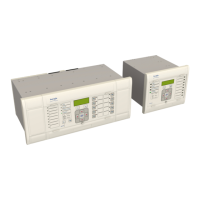
